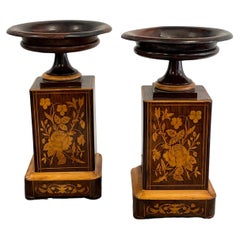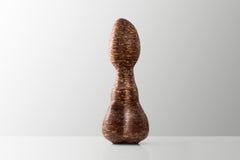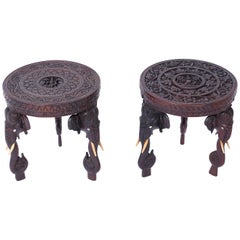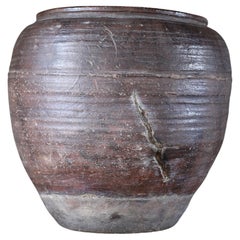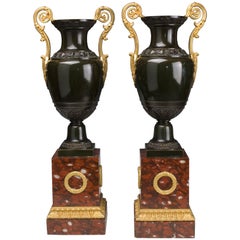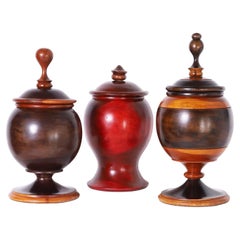Mahogany Garniture
to
2
1
1
1
1
1
21,016
219
200
118
102
3
1
1
1
1
1
Height
to
Width
to
3
3
3
1
Material: Mahogany
A pair of 19th century Fireplace Mantel Decorations, France 1830
Located in Belmont, MA
Explore these exquisite French antique vases from 1830, designed as companion pieces for a mantel clock. Crafted with a mahogany veneer and adorned...
Category
1830s French Restauration Antique Mahogany Garniture
Materials
Mahogany, Maple
STACKED Sculpture No 5. Made of Salvaged Walnut by Richard Haining Available Now
Located in Brooklyn, NY
This is Richard's third free-form exploration using his signature STACKED style. As with all of his work, this sculpture was built, sculpted, and finished entirely by hand. To the confusion of many, there is no lathe work involved. The desired profile is defined during the building process. Imagine coil pottery...
Category
2010s American Modern Mahogany Garniture
Materials
Pottery, Wood, Hardwood, Mahogany, Reclaimed Wood, Scrap Wood, Walnut
Near Pair of Antique Anglo Indian Petite Stands with Elephants
Located in Palm Beach, FL
Near pair of Anglo-Indian stands crafted in mahogany with figural medallions in the center tops surrounded by elaborate floral designs over three elephant head legs with bone tusks.
Category
20th Century Indian Anglo-Indian Mahogany Garniture
Materials
Mahogany
Related Items
Japanese Antique Pottery with Beautiful Ripped in the Edo Period/Tsubo Wabisabi
Located in Sammu-shi, Chiba
It is an old jar baked in Japan.
It seems to be in the Edo period (1700s-1800s).
The unique distorted shape is beautiful.
The color and balance of the gla...
Category
Early 19th Century Japanese Edo Antique Mahogany Garniture
Materials
Pottery
$900
H 14.38 in Dm 14.97 in
Pair of French Restoration Urns, 19th Century
Located in Saint-Ouen, FR
Pair of French restoration urns. 19th century
In ormolu and patinated bronze on rouge griotte marble bases.
Category
19th Century French Antique Mahogany Garniture
Materials
Griotte Marble, Bronze
Pair of French Early 19th Century Restauration Gothic Revival Bronze Urns Vases
Located in Worpswede / Bremen, DE
Attractive pair of French 19th century gothic revival gilt patinated bronze and marble urns. Finely chiselled and authentic condition.
Category
Mid-19th Century French Restauration Antique Mahogany Garniture
Materials
Marble, Bronze
$3,459 / set
H 8.04 in Dm 5.32 in
1940s Pair of Bronze Polychrome Enameled Vases
Located in Marbella, ES
1940s pair of bronze polychrome enameled vases in Arabic style, using ornamental geometric and floral patterns.
Category
Mid-20th Century Asian Mahogany Garniture
Materials
Bronze
Anglo-Indian Footed Box with Lidded Compartments, 19th Century
Located in Moreno Valley, CA
19th century Anglo-Indian wooden box fitted with various compartments finely hand carved.
The top is finely hand carved with the Taj Mahal.
The interior with removable hand carved nine-lidded compartments, the front cover has a mirror, the whole exhibiting very fine workmanship.
This fine late Victorian Anglo-Indian box from India is in great condition for it age.
A beautiful example of an Anglo-Indian fine art...
Category
Late 19th Century Indian Anglo-Indian Antique Mahogany Garniture
Materials
Sandalwood
Pair of Ceramic Vases Sculptures One of a Kind Signed by French Ceramist Dalo
By Dalo
Located in Paris, FR
A set of two "Idoles", decorative vases in clay with stylized faces, handmade by French ceramicists Dalo
Earthenware with shiny blue and green enamel
One of a kind, creation 2022 s...
Category
21st Century and Contemporary Mahogany Garniture
Materials
Ceramic
$2,194 Sale Price / set
20% Off
H 7.49 in Dm 5.12 in
Pair of Dutch Chestnut Urns with Chinoiserie Decoration, 19th Century
Located in Delft, NL
A pair of Dutch chestnut urns with chinoiserie decoration, 19th century.
2 Pieces of 19th Century Dutch red lacquered oval urns with lion's mask and ring handles decorated with gilt chinoiserie scenes on an oval foot. The lids with acorn finials. The acorn finals and the feet are made of pewter...
Category
19th Century European Antique Mahogany Garniture
Materials
Metal, Pewter
$2,117 / set
H 13.19 in W 7.09 in D 4.93 in
Antique Rare Pottery Coated with Copper Plate Used in Japan/Tsubo Wabisabi
Located in Sammu-shi, Chiba
It is used in Japan.
It seems to be in the Edo period (1700s-1800s).
But details are unknown.
The unique distorted shape is beautiful.
The color and balance of the glaze are al...
Category
Early 19th Century Japanese Edo Antique Mahogany Garniture
Materials
Pottery
$640 Sale Price
54% Off
H 7.09 in Dm 7.49 in
No.102 Stoneware Sculpture, Tonfisk by Ciona Lee
Located in Geneve, CH
No.98 stoneware sculpture, Tonfisk by Ciona Lee
One of a Kind
Dimensions: Ø 13 x H 19 cm
Materials: White stoneware, satin cream glaze
Variations of size and colour available
...
Category
2010s British Modern Mahogany Garniture
Materials
Stoneware
Vintage Indian Hand-Hammered Multi-Sided Tin Storage Canister from the 1930s
Located in Yonkers, NY
A 1930s multi-sided storage canister hand-hammered with tin in India. This canister displays a six sides shape with a narrow bottom and a large belly...
Category
Early 20th Century Indian Mahogany Garniture
Materials
Tin
$390
H 10 in W 7 in D 7 in
Anglo-Indian Silver Belt Buckle with Red and Black Belts
Located in Hamilton, Ontario
This is a highly ornate and decorative old Anglo-Indian silver belt buckle with red and black ribbon belts. It dates to the early 20th centu...
Category
Early 20th Century Indian Anglo-Indian Mahogany Garniture
Materials
Silver
$795 Sale Price
36% Off
H 3 in W 5.25 in D 0.25 in
Pair of 19th Century French Mantel Urns, circa 1890
Located in Dallas, TX
Wonderfully well preserved, this pair of 19th century French mantel urns were designed to adorn the mantel or buffet, or perhaps console in ...
Category
1890s French Neoclassical Antique Mahogany Garniture
Materials
Marble, Spelter
Previously Available Items
Group of Three Large Moroccan Turned Wood Lidded Jars Priced Individually
Located in Palm Beach, FL
Standout group of three vintage Moroccan lidded jars each handcrafted in turned mahogany with its own dramatic form and wood stained color scheme.
...
Category
Mid-20th Century Moroccan Mid-Century Modern Mahogany Garniture
Materials
Mahogany
Recently Viewed
View AllMore Ways To Browse
Childs Antique Wooden Chair
Chinese Bronze Seal
Chinese Coral Porcelain
Chinese Export Fans
Chinese Export Punch Bowl
Chinese Famille Jaune
Chinese Jade Panels
Chinese Jade Plaque
Chinese Lacquer Eight Panel
Chinese Lattice Window
Ching Dynasty
Christofle Champagne Bucket
Church Font
Coalport Cobalt
Colonial American Bed
Concrete Dog Sculpture
Coral Reef Table
Corn On The Cob
